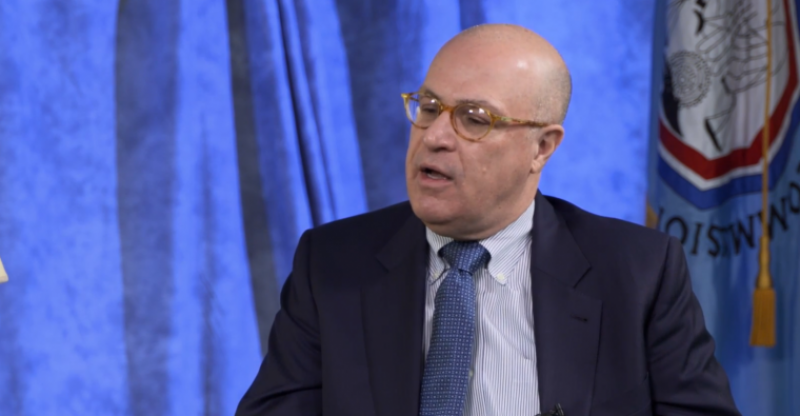CFTC Chairman Claims Distributed Ledger Tech (DLT) Can Enforce Regulation
As FinTech remains to design new business models for finance, a high-profile financial regulator is of the opinion that it can be used to implement derivative laws more effectively.
Christopher Giancarlo, the chairman of the US Commodity Future Trading Commission (CFTC), mentioned distributed ledger technology (DLT) and how it can enforce regulations for derivative markets while speaking at the D.C. Fintech Week Conference at Georgetown University this Wednesday.
According to Giancarlo, DLT-powered Quantitative Regulation could help regulations to control the market more efficiently while cutting down on costs. Joint with machine learning algorithms, it can be used to identify the segments of markets where high risks or unrecognized counterpart weaknesses are increasing. Additionally, the CFTC chair said that Quantitative Regulation could standardize and distribute critical data to market actors such as regulators.
“We can also envision the day where rulebooks are digitized, compliance is increasingly automated or built into business operations through smart contracts, and regulatory reporting is satisfied through real-time DLT networks,” Giancarlo explained. “The machines here at the CFTC would have the ability to communicate regulatory requirements and consume and analyze the data that comes in through such systems.”
Giancarlo confirmed that the CFTC has “the ability to keep pace with those who attempt to defraud, distort, or manipulate,” suggesting it may have already started designing systems that will enforce derivate market regulations.
Giancarlo emphasized how their machine learning and DLT systems would be able to digitize rules and regulations and consumer process and analyze data in real-time. Shifting the CFTC to such a technology would allow it to analyze data as it gets reported. It would also enable the regulatory agency to study the effect of certain provisions and how they can be adapted to enable an optimal result.
“Rather than rely on static rules and regulations that were put in place without knowing exactly the consequences or results they would drive in the market, we may be able to measure data, real-world outcomes, and success in satisfying regulatory objectives,” Giancarlo anticipated.





